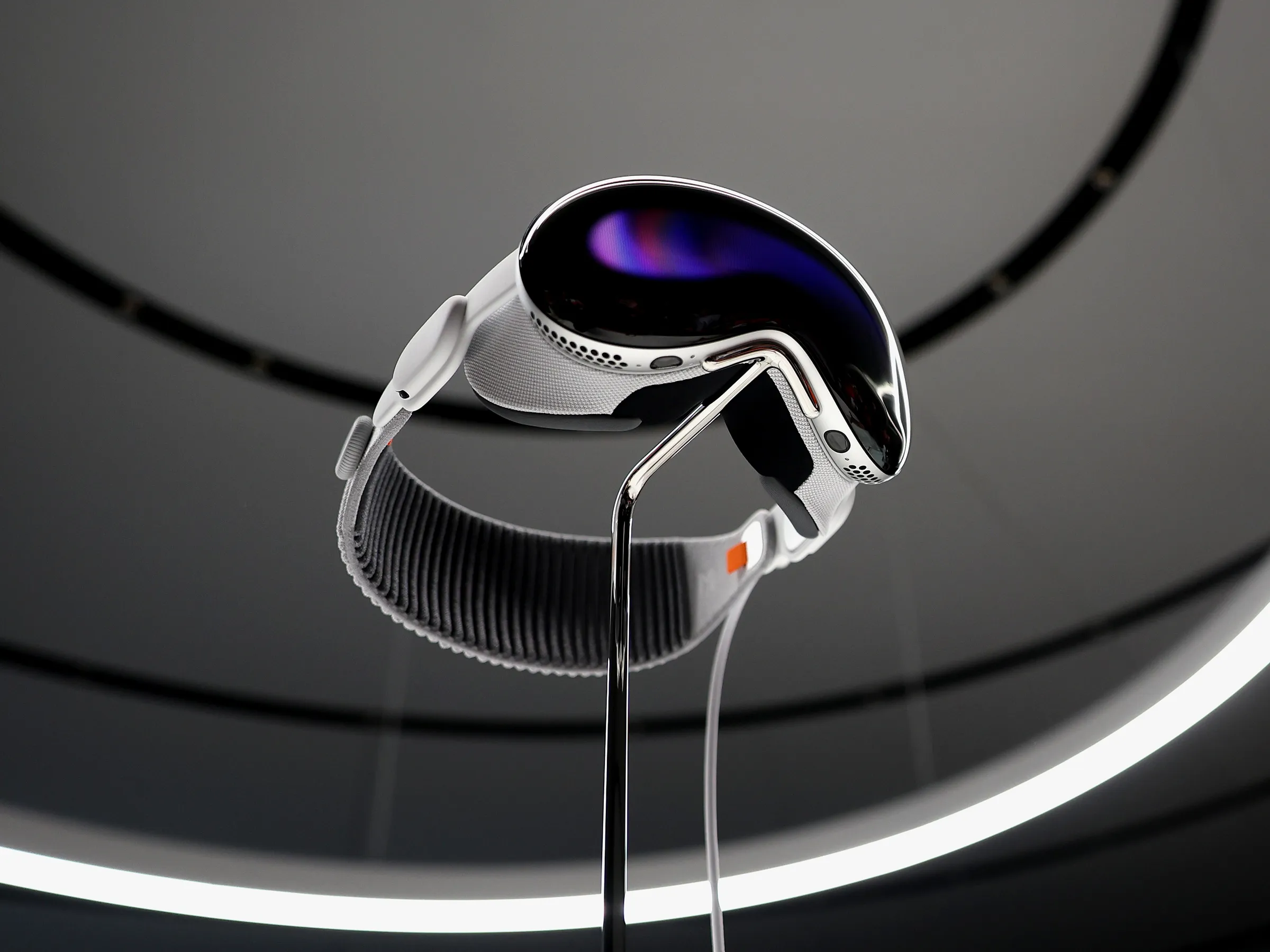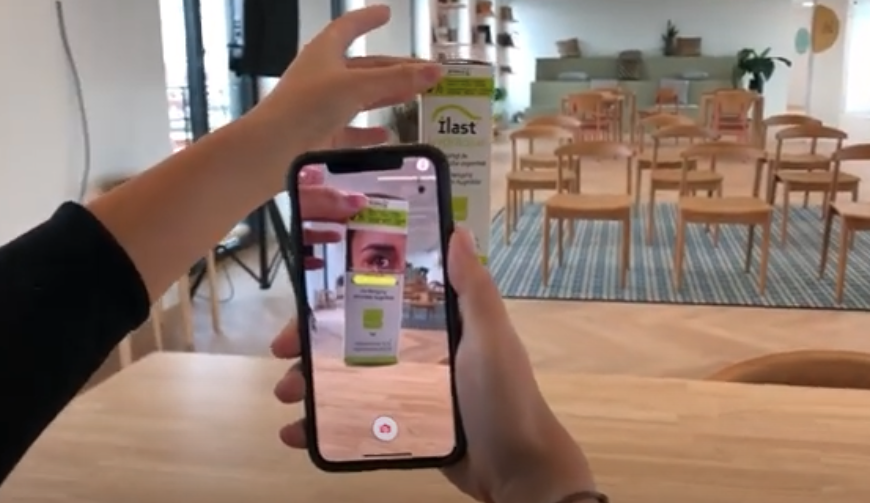Main takeaways
- Apple’s VisionPro has revolutionized augmented reality.
- The look-and-pinch input system is intuitive and refined.
- The headset prioritizes passthrough view, treating fully immersive experiences as exceptions.
- The passthrough view is best-in-class but still has room for improvement.
- The virtual displays have exceptional resolution and a polished interface.
- The headset lacks dedicated motion controllers, which may disappoint VR gamers.
- The price of $3,500 is prohibitively high for most consumers.
- Apple’s MR device does not currently support WebXR.
- The headset’s ergonomics could be improved, but third-party headstraps may help.
- The headset captures volumetric memories using its on-board cameras.
- Extended usage of the headset poses challenges for spatial computing adoption.
- The VisionPro lays a strong foundation for future MR experiences.
- The headset is compatible with Unity, allowing developers to create AR experiences.
- The VisionPro is priced out of reach for most people, and its functionality for daily use remains uncertain.
- Apple showcased a high-quality display and interface.
- The future potential of the VisionPro depends on further development of mixed reality capabilities.
- The headset is also compatible with the ARGO platform, enabling access to existing experiences.
- More questions and demos are expected as the headset’s launch approaches.
Apple’s recent launch of the VisionPro headset has created waves of excitement and speculation in the world of augmented reality (AR). The highly anticipated XR device has not only met but exceeded the expectations surrounding its release. Within a mere 24 hours of its announcement, the internet was flooded with thousands of articles, posts, and thought pieces discussing this groundbreaking innovation.
While I may not possess the technical knowledge and expertise of seasoned commentators, I firmly believe that passing judgment on a product without firsthand experience is premature. Spatial computing, especially in the realm of AR, is an arena where personal encounters play an indispensable role. No video or collection of words can fully capture the transformative essence of the technology.
In this blog post, I aim to provide my initial impressions and key takeaways from the launch of Apple’s VisionPro. As I delve into the features and functionalities of this revolutionary headset, it is important to keep in mind that my perspective is based on available information and expert insights rather than hands-on experience. Let us explore the potential of this cutting-edge device and its impact on the future of augmented reality.
Look & Tap
It starts with the input. Apple is leaning heavily into using your eyes as a cursor, and a pinch gesture as a click. The headset has cameras on the bottom that face downward so that even subtle pinches from your hand in your lap are visible and detected. But you don’t see a floating cursor where your eyes are, nor do you see a laser pointer shooting out of your hand. You just look at the thing you want to press, then do a quick pinch.
On paper you might think this sounds shoddy. But remember, this is Apple. They’ve tested and refined this system six ways from Sunday, and it works so well that after a minute or two you hardly think about how you’re interacting with the headset, you just are.
This look-and-pinch system is so simple for the headset’s basic input that I won’t be surprised if we see other companies adopt it as soon as possible.
Reality First
So there’s the simple input and then there’s a passthrough-by-default view. This is an MR headset after all, meaning it can easily do augmented reality—where most of your view is of the real world, with some virtual content; or virtual reality—where all of your view is virtual content.
When you put AVP on your head, you instantly see the outside world first. In fact, the way that Apple defers to the passthrough view shows that they want to treat fully immersive experiences as the exception rather than the rule. Generally, you won’t pop into a fully immersive scene unless you actively making the decision to do so.
The passthrough view is certainly best-in-class, but we’re still probably two generations away from it truly feeling like there’s nothing separating your eyes from the real world. Granted, the journalist was able to read all the text on its phone with no issue, which has been the ‘bar’ for passthrough quality that he has been waiting to see exceeded.
Beautiful Virtual Displays
According to journalists, the imperfect passthrough resolution somewhat betrays the exceptional display resolution which exhibits not even a hint of screen-door effect. It may not be ‘retina resolution’ (generally agreed to be around 60 pixels per-degree), but it’s good enough that you won’t know how far off it is from retina resolution.
This clarity is helped by the fact that Apple has done its Apple-y thing and ensured that panels, text, and images consistently render with superb quality. The entire interface feels iOS-polished with animations and easy to use buttons and controls..
Record & Rewatch Memories
AVP might not be a VR gaming headset, but it does at least one thing that no other headset does: capture volumetric memories using its on-board cameras. Using the button on the top of the headset you can capture volumetric photos and videos with just a press.
Apple showed a demo of a volumetric video capture of a group of kids blowing out candles on a birthday cake. From someone who managed to test it It was like they were right in front of him.
That instant connection—to people I don’t even know—was a clear indicator that there’s something special to this. I can already imagine watching a volumetric video of a cherished memory, or of a loved one that has passed, and I know it would be a powerful experience.
Ergonomy
For one, I was hoping Apple would move the needle more on headset ergonomics. According to journalist that have has a chane to test it in real life, AVP isn’t uncomfortable compared to contemporary MR headsets, but it’s still in the same ballpark. They found the headset fairly front-heavy, even with an optional top strap. However, the choice to have the strap go from ear-to-ear (rather than forehead to back-of-head) seems like a mistake because it doesn’t let you lift the headset’s front-heavy weight up quite as well.
It’s difficult to judge headset ergonomics without real long-term usage, but my gut was that Quest Pro is more comfortable thanks to its more balanced design and rigid headstrap.
Luckily AVP’s headstrap is designed with a simple release mechanism that should make third-party headstraps plentiful. And I wouldn’t be surprised if the kind of headstrap people gravitate toward the most includes a top strap that goes from forehead to back-of-head, as well as a mount on the back of the head for the battery (to better balance the weight).
And let’s just get this out there: it’s a big bummer that AVP lacks dedicated motion controllers—even as an optional add-on. The most popular VR games all require VR controllers (and will be painful, if impossible to port for hand-tracking alone). The hardware overall is generally pretty awesome and you can be sure I’d love to play my favorite VR games with it. Sadly that’s not possible and it looks like it won’t be any time soon.
The Price is Insane. Period.
$3,500 is insane for 99% of people, and Apple knows it.
The Pro in Apple Vision Pro indicates as much… this device is for ultra Apple enthusiasts, exceptionally wealthy people who want the latest and coolest tech money can buy, and developers who think they might be able to build a business from the headset and its eventual progeny.
With this first-gen headset, Apple has planted a flag in the ground with Vision Pro, saying, ‘we want the MR experience to be at least this good, regardless of what it costs’. From here the goal is clear: make it smaller, better, and cheaper. And if they keep doing that, future iterations of AVP will become increasingly valuable and increasingly accessible to more and more people. If this is the bar they’re setting for themselves (and by extension, the rest of the XR industry), then the future is looking very bright… even if it’s not quite here yet.
The lack of WebXR
This is a bit nerdy, but basically it’s the web in 3D. It already technically exist and has fully prepared specs. All browsers have it, but Safari users have to enable it in settings. This small setting on all iOS devices has made everybody wait for WebXR for years.
You would think that Apple’s MR device would support spatial websites, especially since they helped design the spec and Safari already supports it, but the websites in the Apple keynote were flat.
Again, the thinking by Apple is “no rush”. Wait till the consumers are thirsty for a spatial web. Then flip the switch and show the consumers why they’d love a new internet (while making it sound like you invented it).
Will you use it for a long period of time?
The battery pack is an elegant solution to a difficult problem but then how long do you really want to spend in a head-worn experience/ session? I get the sense that Apple has made the displays as good as you can get for 2D images from what I’ve read and managed to make the world around you feel sharp with zero latency and so no eye strain.
But getting your brain used to spatial computing for long periods of time is still a strain. Getting people to wear a headset for daily tasks remains a paradigm shift beyond may other technological leaps in form factor that have gone before. This is still the great unknown. But Apple has put a lot of thought into their user-centric design.
Conclusion
While Apple’s new Vision Pro headset isn’t going to satisfy the existing base of consumer VR users, it’s mastering the rest of the basics better than anyone else and it certainly open a new era for AR with its Pass-through capabilities.
Probably 90% of what consumers are using VR headsets for today is entertainment, and of that entertainment, most of it is gaming. And if you’re among those people using such headsets today, you’ll reasonably be disappointed that Apple Vision Pro lacks controllers and isn’t going to be playing top VR games anytime soon. But for everyone else, it’s a back-to-basics approach that’s laying a sturdy foundation to build upon in the future.
2024 is still a while away, and Apple’s headset is priced way out of range for most people. And I have no idea how functional this current headset would feel if I were doing everyday work. But Apple did show off a display, and an interface that is great. If Apple can build on that, and the Vision Pro finds ways of expanding its mixed reality capabilities, then who knows what else is possible?
The Vision Pro is also compatible with Unity, a popular game engine that is used to create a wide range of VR and AR applications. This means that developers can easily create AR experiences for the Vision Pro using Unity, which helps to expand the device’s capabilities even further. It’s also a good thing that the entire ARGO platform is built on top of it for all its native apps which means that all the experience that you are currently building from our platform will be accessible from the Vision Pro
This was just my fast-take reaction to a quick set of article on the topic. There are a lot more questions to come, but this first set of demos resonated with me. Apple showed what it can do, and we’re not even at the headset’s launch yet.




